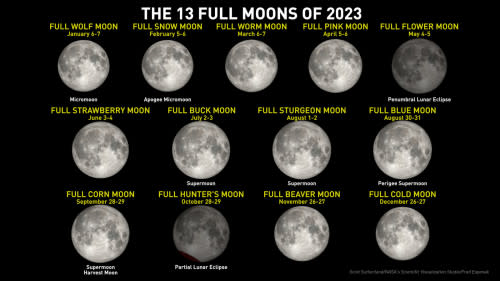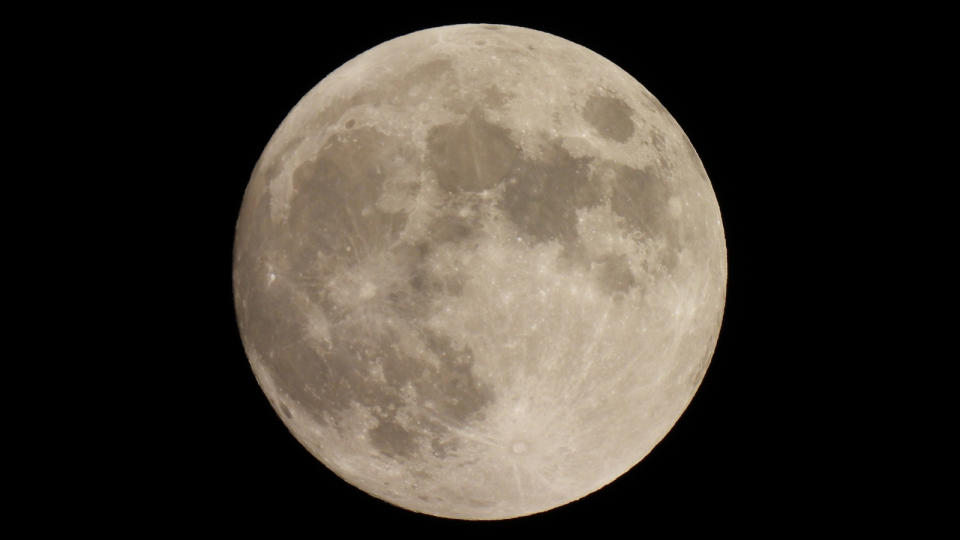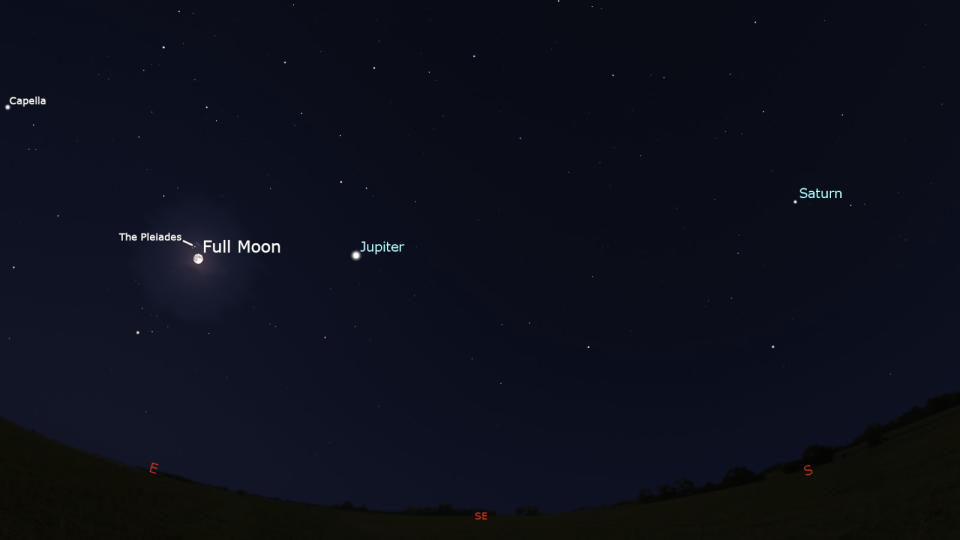Look up! The Full Beaver Moon will light up the night sky this weekend

Is your forecast clear this weekend? Turn your eyes to the sky to see November's Full Beaver Moon.
The last Full Moon of Fall 2023 rises Sunday night. Due to its exact timing at 4:17 a.m. EST, Monday, November 27, the Moon will appear full from Sunday morning through Tuesday morning. That gives us plenty of opportunities to enjoy the splendor of the Full Moon.
What is the Beaver Moon?
Every Full Moon during the year has a name popularized by the various Farmers Almanacs.
Most of these names were adopted from the lunar calendars invented and used by the First Nations peoples that lived in what is now the northeastern United States. Some, like the Harvest Moon and Hunter's Moon, instead reference Colonial American or European folklore.

This graphic collects all the relevant data about each of the 13 Full Moons of 2023, including their popular names, whether they are a 'super' or 'micro' Moon, a 'perigee' or 'apogee' Moon, and whether they are remarkable in some other way (Harvest Moon, lunar eclipse, etc.). Credit: Scott Sutherland/NASA's Scientific Visualization Studio/Fred Espenak
It's interesting to note that these First Nations lunar calendars didn't just use these names for the Full Moons. Each name actually referred to the entire length of time between that Full Moon and the next. Essentially, they were the equivalent of the names of the months of the year.
The name most often given to November's Full Moon is the Beaver Moon.
According to the timeanddate.com, "the Full Moon for November is named after beavers because, at this time, they become particularly active in building their winter dams in preparation for the cold season. The beaver is mainly nocturnal, so they work under the light of the Full Moon."
Other names they list for this moon include Frost Moon, Freezing Moon, Trading Moon, and Snow Moon.

This is what the Full Moon on November 7, 2022 looked like from Thunder Bay, Ont. Credit: Hazel Clover/UGC
According to some pagan traditions, as this is the last Full Moon before the December solstice in 2023, it is known as the Mourning Moon. This is apparently a time for reflecting upon the events of the year and letting go of the past.
READ MORE: What is the mysterious Moon Illusion?
It's not alone
The Full Moon will definitely be the brightest thing in the night sky this weekend. However, if you take a few moments to glance around, you can spot a few other things, as well.

A simulated view of the night sky from November 26, a few hours after sunset, shows the locations of the brightest objects - the star Capella, the Moon near the Pleiades star cluster, plus Jupiter and Saturn. Credit: Stellarium/Scott Sutherland
The most noticeable object other than the Moon will likely be Jupiter. Just look a little bit to the right/west of the Moon and it will be shining brightly there. If you have a telescope or binoculars handy, a closer look may allow you to see some or all of its four largest moons!
The brightness of the Full Moon could make this a challenge, but if you look very closely just up and to the left of the Moon, you may see the Pleiades star cluster. Binoculars or a telescope will make these stars easier to see.
Well off to the right of the Moon and Jupiter is planet Saturn, located in the southwest sky. The planet is quite a bit dimmer than Jupiter, so it may not be easily found for those observing from inside the light pollution dome of a large city. However, giving your eyes a bit of time to adjust may make it easier.
Also, even though the night of the Full Moon isn't the best time to see meteors, there are at least three meteor showers currently active at this time of year. The twin Taurids and the Leonids are winding down from their peaks earlier this month. Meanwhile, the Geminids are ramping up towards their peak on the night of December 13-14.
So, if it's exceptionally clear overnight right now, you can find somewhere distant from (or sheltered from) city lights, and you keep the Moon out of your direct field of view, you may see a meteor or two flash across the sky throughout the night.
(Thumbnail image courtesy Harvey Daneluk, who captured the Full Beaver Moon on November 20, 2021 from Hamilton, Ont., and uploaded the picture to The Weather Network's UGC Gallery)

